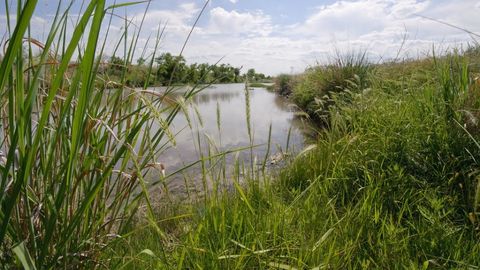Benefits of Riparian Buffers

What is a Riparian Buffer?
Riparian buffers are corridors of vegetation found next to a body of water, ideally at least 25 feet wide on either side of the body of water.
Benefits of Riparian Buffers
Riparian buffers help filter sediment, nutrients, pesticides, and animal waste from agricultural land runoff and stabilize eroding banks.
- Sediments, phosphorus, bacteria and pesticides move from agricultural fields to surface water through runoff. Riparian buffers slow surface runoff, allowing the sediment and sediment-associated pollutants to settle out before reaching the surface water.
- Plants in the riparian buffer zone can utilize nutrients and reduce discharge.
Riparian Management Guidelines
- Allow degraded riparian areas to recover by fencing livestock out of damaged riparian areas
- Minimize livestock dependency on riparian vegetation
- Allow riparian vegetation to grow and reproduce after being grazed
- Reduce soil compaction by not grazing when soil is wet or saturated
- Minimize stream bank degradation by providing livestock with alternative sources of water
To calculate your estimated reduction of nitrogen and phosphorus loss reduction from your riparian buffer visit: https://extension.usu.edu/waterquality/water-quality-tools

